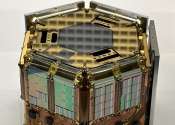Q&A: Cosmic rays, space weather and larger questions about the universe
With the naked eye, you can't see the weather in space, or feel the cosmic rays beaming down to Earth—but they can impact critical systems like our climate, computer connectivity, communications and even our health.









